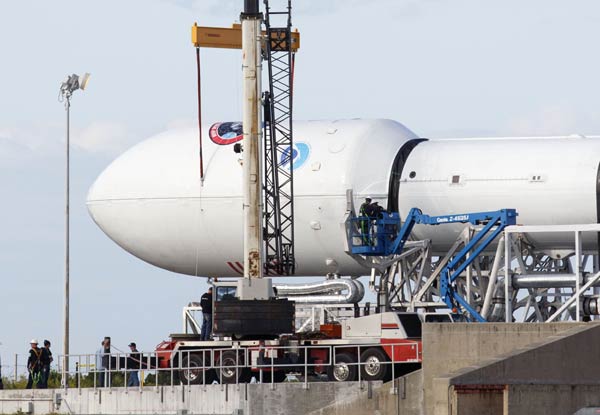SpaceX Dragon capsule returns from space station
(Agencies) Updated: 2015-02-11 10:14
 |
|
SpaceX workers examine the unmanned Falcon 9 rocket carrying NOAA's (National Oceanic and Atmospheric Administration) Deep Space Climate Observatory Satellite as it lays horizontally on launch complex 40 at the Cape Canaveral Air Force Station in Cape Canaveral, Florida February 9, 2015. [Photo/Agencies] |
It also will monitor the sun-lit side of Earth, tracking volcanic plumes, measuring ozone and monitoring droughts, flooding and fires.
The launch of DSCOVR was planned for Sunday, but was delayed due to a problem with an Air Force radar system needed to track the Falcon rocket during flight.
Once the satellite is on its way to orbit, eventually reaching 930,000 miles (1.5 km) from Earth, SpaceX plans to attempt to land the Falcon launcher's spent first stage, part of ongoing efforts to develop reusable rockets, potentially slashing launch costs.
The booster is programmed to separate itself three minutes after liftoff, turn around, make two braking burns and touch down on a platform floating about 370 miles (595 km) northeast of the launch site.
The last Falcon rocket to fly nearly made it back intact, but it ran short of hydraulic fluid to maneuver steering fins and it crashed into the platform.
For the second attempt, engineers added an extra reservoir of hydraulic fluid, but the rocket will be coming in with nearly twice the force and four times the heat, SpaceX said.
"Rocket re-entry will be much tougher this time around due to deep space mission," Musk wrote on Twitter.






